Month: October 2020
Pandora’s Jar by Natalie Haynes
Stephanie Merritt at The Guardian:
 For the past few years, Natalie Haynes has been building a career out of rescuing the women of the ancient world from obscurity or cliche. Her most recent Women’s prize-shortlisted novel, A Thousand Ships, told the stories of the women of the Trojan war. With Pandora’s Jar, she returns to nonfiction to examine the origin stories and cultural legacies of the best-known women of classical literature, with the characteristic blend of scholarship and sharp humour that will be familiar to fans of her Radio 4 show, Natalie Haynes Stands Up for the Classics.
For the past few years, Natalie Haynes has been building a career out of rescuing the women of the ancient world from obscurity or cliche. Her most recent Women’s prize-shortlisted novel, A Thousand Ships, told the stories of the women of the Trojan war. With Pandora’s Jar, she returns to nonfiction to examine the origin stories and cultural legacies of the best-known women of classical literature, with the characteristic blend of scholarship and sharp humour that will be familiar to fans of her Radio 4 show, Natalie Haynes Stands Up for the Classics.
All the usual suspects are here, including Helen, Medusa, Jocasta, Penelope and Medea, and it’s striking, considering their stories en masse, how often they have been passed down the literary and artistic canon as scapegoats for the mistakes of men, or else muted altogether. Take the title character, who never had a box in the original version (the confusion is likely the fault of Erasmus in the 16th century, mistranslating the word for a large jar), and whose name means simply “all-giving”.
more here.
Don DeLillo, An Old Hand at Paranoia and Dread
Dwight Garner at the NYT:
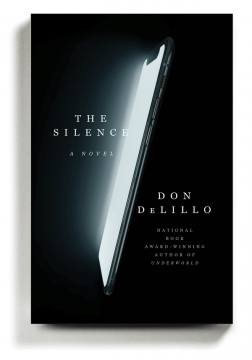 DeLillo’s new one is a pristine disaster novel with apocalyptic overtones. It’s a Stephen King novel scored by Philip Glass instead of Chuck Berry. A plane from Paris to Newark crash-lands. Two of the main characters are on this flight, and they survive. Power grids have gone down all over the world. Aliens? The Chinese? The Joker? QAnon?
DeLillo’s new one is a pristine disaster novel with apocalyptic overtones. It’s a Stephen King novel scored by Philip Glass instead of Chuck Berry. A plane from Paris to Newark crash-lands. Two of the main characters are on this flight, and they survive. Power grids have gone down all over the world. Aliens? The Chinese? The Joker? QAnon?
DeLillo, who released a chemical “airborne toxic event” in “White Noise” (1985), is an old hand at scenarios of this sort. With the electricity cut, one man comments, in lines that could have appeared in nearly any of DeLillo’s books: “The semi-darkness. It’s somewhere in the mass mind. The pause, the sense of having experienced this before. Some kind of natural breakdown or foreign intrusion. A cautionary sense that we inherit from our grandparents or great-grandparents or back beyond. People in the grip of serious threat.”
more here.
Inside the Mind of an Anti-vaxxer
Olga Khazan in The Atlantic:
 Sometime in the coming months, our prayers will have been answered. The researchers will have pulled their all-nighters, mountains will have been moved, glass vials will have been shipped, and a vaccine that protects us from the novel coronavirus will be here. We will all clamber to get it so we can go back to school, work, restaurants, and life. All of us, that is, except for people like Marcus Nel-Jamal Hamm. Hamm, a Black actor and professional wrestler, is what some might call an “anti-vaxxer,” though he finds that term derogatory and reductive. Since about 2013, he’s been running a Facebook page called “Over Vaccination Nation,” which now has more than 3,000 followers. One recent post is a video by the anti-vaccinationist Robert F. Kennedy Jr., wrongly suggesting that mercury-laced vaccines are shipped to predominantly Black communities.
Sometime in the coming months, our prayers will have been answered. The researchers will have pulled their all-nighters, mountains will have been moved, glass vials will have been shipped, and a vaccine that protects us from the novel coronavirus will be here. We will all clamber to get it so we can go back to school, work, restaurants, and life. All of us, that is, except for people like Marcus Nel-Jamal Hamm. Hamm, a Black actor and professional wrestler, is what some might call an “anti-vaxxer,” though he finds that term derogatory and reductive. Since about 2013, he’s been running a Facebook page called “Over Vaccination Nation,” which now has more than 3,000 followers. One recent post is a video by the anti-vaccinationist Robert F. Kennedy Jr., wrongly suggesting that mercury-laced vaccines are shipped to predominantly Black communities.
Hamm’s wariness of vaccines began when he took his son, who is now 10, to get vaccinated as a baby. He asked the pediatrician whether the boy could be exempted from the standard vaccine schedule because he has relatives with multiple sclerosis and autism. According to Hamm, the doctor treated him like a criminal just for asking. The experience left Hamm in a fog of unanswered questions: Do doctors have a quota of vaccines they have to fulfill? Why do some kids have bad reactions to vaccines? Is there something they’re not telling us? He started to distrust the accepted wisdom about vaccines, doubting that the official narrative is the true one.
More here.
Saturday Poem
Crossroads
My body, now that we will not be traveling together much longer
I begin to feel a new tenderness toward you, very raw and unfamiliar,
like what I remember of love when I was young —
love that was so often foolish in its objectives
but never in its choices, its intensities
Too much demanded in advance, too much that could not be promised —
My soul has been so fearful, so violent;
forgive its brutality.
As though it were that soul, my hand moves over you cautiously,
not wishing to give offense
but eager, finally, to achieve expression as substance:
it is not the earth I will miss,
it is you I will miss.
by Louise Glück
from Collected Poems 1962-2012
David Byrne, Spike Lee, and Some Wisdom For Right Now
Kevin Sintumuang in Esquire:
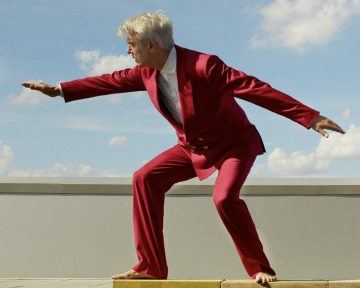 David Byrne’s American Utopia begins with the sound of birds for close to a minute before revealing the singer, seated alone at a desk, holding a human brain. Otherwise, the stage is empty, save for a curtain composed of hundreds of thin metal chains that line the walls and shimmer like streaks of rain. As in Stop Making Sense, the 1984 Talking Heads concert film, band members emerge as the show progresses. They, like Byrne, are dressed in gray suits, with no shoes, no socks. It’s a stripped-down look for a show that is as cerebral and subtly political as it is raucous and joyful. Byrne wrote or cowrote almost every song in it—a few are from his 2018 album of the same name, and about half are familiar Talking Heads tunes, including a version of “Once in a Lifetime” that’s somehow even more poignant than the original. But it’s a cover of Janelle Monáe’s “Hell You Talmbout,” one of American Utopia’s last songs, that becomes its soul. In between, Byrne muses, philosophically and humorously, on whether babies are smarter than grown-ups and why people are more interesting to look at than, say, a bag of potato chips.
David Byrne’s American Utopia begins with the sound of birds for close to a minute before revealing the singer, seated alone at a desk, holding a human brain. Otherwise, the stage is empty, save for a curtain composed of hundreds of thin metal chains that line the walls and shimmer like streaks of rain. As in Stop Making Sense, the 1984 Talking Heads concert film, band members emerge as the show progresses. They, like Byrne, are dressed in gray suits, with no shoes, no socks. It’s a stripped-down look for a show that is as cerebral and subtly political as it is raucous and joyful. Byrne wrote or cowrote almost every song in it—a few are from his 2018 album of the same name, and about half are familiar Talking Heads tunes, including a version of “Once in a Lifetime” that’s somehow even more poignant than the original. But it’s a cover of Janelle Monáe’s “Hell You Talmbout,” one of American Utopia’s last songs, that becomes its soul. In between, Byrne muses, philosophically and humorously, on whether babies are smarter than grown-ups and why people are more interesting to look at than, say, a bag of potato chips.
In the summer of 2019, before the start of the show’s run on Broadway, Byrne had the idea to adapt it for the screen. He invited Spike Lee, whom he’d been friendly with for years, to attend previews, then asked whether he’d like to direct. Lee loved the show—and the idea. The result, which comes out on HBO in mid-October, is not a glorified theatrical recording. It’s a real film.
A powerful new tool to study the cosmos
Nathan Collins in Symmetry:
 In just a few years, scientists at Vera C. Rubin Observatory in Chile will launch the Legacy Survey of Space and Time (LSST), using the world’s biggest digital camera for ground-based astronomy to take the most detailed pictures of the night sky ever made. When they do, two of the most important things they’ll look for are dark matter and dark energy, the mysterious, invisible substances that make up about 95% of our universe.
In just a few years, scientists at Vera C. Rubin Observatory in Chile will launch the Legacy Survey of Space and Time (LSST), using the world’s biggest digital camera for ground-based astronomy to take the most detailed pictures of the night sky ever made. When they do, two of the most important things they’ll look for are dark matter and dark energy, the mysterious, invisible substances that make up about 95% of our universe.
But there’s a bit of a paradox here: These substances are invisible, so how are researchers going to find them by looking at a bunch of digital photographs?
The short answer is that they’ll look for patterns—patterns in the structure of galaxies, in the cosmic web that links galaxies together, and in the expansion of the universe. The hope is those patterns will reveal something about how much dark energy and dark matter is out there and how they behave.
More here.
Beautiful harmony in isolated John Lennon and Paul McCartney vocals on “If I Fell”
The Presidential Town Halls Were Mister Rogers Versus Nasty Uncle Trump
Susan Glasser in The New Yorker:
 Even Donald Trump has moments of self-awareness. During an interview last week with Rush Limbaugh, the right-wing talk-radio host whom he honored with the Medal of Freedom earlier this year, the President briefly abandoned his puffery to admit that he might be defeated—and that his own nastiness would be the reason why. “Maybe I’ll lose,” he told Limbaugh, “because they’ll say I’m not a nice person.” He added, “I think I am a nice person,” before pivoting back to his trademark name-calling. A few days later, the political liability of his brutish persona was clearly on Trump’s mind again. “Can I ask you to do me a favor?” he begged “suburban women” at a rally in Johnstown, Pennsylvania, on Monday. “Will you please like me, please, please?”
Even Donald Trump has moments of self-awareness. During an interview last week with Rush Limbaugh, the right-wing talk-radio host whom he honored with the Medal of Freedom earlier this year, the President briefly abandoned his puffery to admit that he might be defeated—and that his own nastiness would be the reason why. “Maybe I’ll lose,” he told Limbaugh, “because they’ll say I’m not a nice person.” He added, “I think I am a nice person,” before pivoting back to his trademark name-calling. A few days later, the political liability of his brutish persona was clearly on Trump’s mind again. “Can I ask you to do me a favor?” he begged “suburban women” at a rally in Johnstown, Pennsylvania, on Monday. “Will you please like me, please, please?”
I do not know who will win the election less than three weeks from now. But I do know this: if Trump does lose, he’s right that his sheer unlikability will be a major contributing factor. He’s a bully and a boor. He’s overbearing, self-absorbed, impossible to shut up, and especially patronizing to women, which, of course, is one of the reasons why those suburban moms he is begging to vote for him are telling pollsters that they are decidedly against him.
More here.
The adaptive cancer cell
From Outreach:
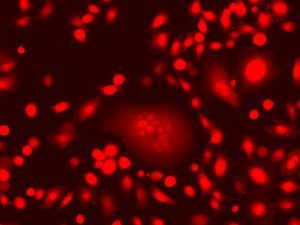 Species adapt to survive in a changing environment through the process of evolution. Evolutionary processes can also take place at the cellular level. Dr Sarah Amend of Johns Hopkins University, Baltimore, USA, is investigating poly-aneuploid cancer cells (PACCs). These large, DNA-laden cells, which are more common in metastatic cancer, develop evolvability: the capacity to evolve. Dr Amend believes that targeting the evolvability of PACCs and exploiting cancer ecology could offer new potential treatment routes for patients with metastatic cancer. When a person dies from cancer, the cause is usually not the primary tumour, but the metastases. Metastases are secondary tumours that develop when cancerous cells leave the original tumour and travel to other parts of the body. Despite many recent advances in medical science, metastases are extremely difficult to treat. While people with metastatic cancer can sometimes survive for many months or years, the disease is almost always fatal, leading to the deaths of 10 million cancer patients globally every year.
Species adapt to survive in a changing environment through the process of evolution. Evolutionary processes can also take place at the cellular level. Dr Sarah Amend of Johns Hopkins University, Baltimore, USA, is investigating poly-aneuploid cancer cells (PACCs). These large, DNA-laden cells, which are more common in metastatic cancer, develop evolvability: the capacity to evolve. Dr Amend believes that targeting the evolvability of PACCs and exploiting cancer ecology could offer new potential treatment routes for patients with metastatic cancer. When a person dies from cancer, the cause is usually not the primary tumour, but the metastases. Metastases are secondary tumours that develop when cancerous cells leave the original tumour and travel to other parts of the body. Despite many recent advances in medical science, metastases are extremely difficult to treat. While people with metastatic cancer can sometimes survive for many months or years, the disease is almost always fatal, leading to the deaths of 10 million cancer patients globally every year.
New research avenues are needed to address the challenges of preventing and treating metastatic cancer. One novel idea is to apply the principles of evolution to cancer. While, for many people, the term ‘evolution’ might conjure up images of larger species – humans evolving from ape-like creatures, for example – the tenets of evolutionary biology also apply on a cellular level. Normally, cells do not simply operate on their own behalf; each cell has a specific function, which contributes to the survival of the whole organism. However, sometimes things go wrong. Unwanted genetic changes can create a cancerous cell, one that divides uncontrollably, leading to the growth of a tumour. Dr Sarah Amend, Assistant Professor of Urology and Oncology at Johns Hopkins University, and her colleagues believe that cancers might undergo convergent evolution – the process in which the same characteristics emerge in different species as a result of separate evolutionary processes. For example, both birds and bats have wings, but the feature arose as the result of separate evolutionary processes.
One type of cancer cell, called a poly-aneuploid cancer cell (PACC), could potentially represent a form of convergent evolution. These cells appear to be present in every type of cancer, in all patients with metastatic disease; they appear to be the ‘common denominator’ of all types of cancer. If this holds true, then the majority of lethal tumours converge on a single phenotype of lethality and resistance: one the research team thinks is due to PACCs.
More here.
Sara Cwyner: Soft Film
The Trouble with Disparity
Adolph Reed and Walter Ben Michaels at nonsite:
 In fact, not only will a focus on the effort to eliminate racial disparities not take us in the direction of a more equal society, it isn’t even the best way of eliminating racial disparities themselves. If the objective is to eliminate black poverty rather than simply to benefit the upper classes, we believe the diagnosis of racism is wrong, and the cure of antiracism won’t work. Racism is real and antiracism is both admirable and necessary, but extant racism isn’t what principally produces our inequality and antiracism won’t eliminate it. And because racism is not the principal source of inequality today, antiracism functions more as a misdirection that justifies inequality than a strategy for eliminating it.
In fact, not only will a focus on the effort to eliminate racial disparities not take us in the direction of a more equal society, it isn’t even the best way of eliminating racial disparities themselves. If the objective is to eliminate black poverty rather than simply to benefit the upper classes, we believe the diagnosis of racism is wrong, and the cure of antiracism won’t work. Racism is real and antiracism is both admirable and necessary, but extant racism isn’t what principally produces our inequality and antiracism won’t eliminate it. And because racism is not the principal source of inequality today, antiracism functions more as a misdirection that justifies inequality than a strategy for eliminating it.
What makes racism look like the problem? The very real racial disparities visible in American life. And what makes antiracism look like the solution? Two plausible but false beliefs: that racial disparities can in fact be eliminated by antiracism and that, if they could be, their elimination would make the U.S. a more equal society. The racial wealth gap, because it is so striking and commonly invoked, is a very good, not to say perfect, illustration of how, in our view, both the problem and solution are wrongly conceived.
more here.
Year 30: Germany’s Second Chance
Jürgen Habermas at Eurozine:
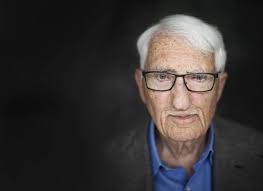 Thirty years after the seismic shift in world history of 1989-90 with the collapse of communism, the sudden eruption of life-changing events could be another watershed. This will be decided in the next few months – in Brussels and in Berlin too.
Thirty years after the seismic shift in world history of 1989-90 with the collapse of communism, the sudden eruption of life-changing events could be another watershed. This will be decided in the next few months – in Brussels and in Berlin too.
At first glance it might seem a bit far-fetched to compare the overcoming of a world order divided into two opposing camps and the global spread of victorious capitalism with the elemental nature of a pandemic that caught us off-guard and the related global economic crisis happening on an unprecedented scale. Yet if we Europeans can find a constructive response to the shock, this might provide a parallel between the two world-shattering events.
more here.
A new history charts the global legacy of Fordist mass production, tracing its appeal to political formations on both the left and the right
Justin H. Vassallo in the Boston Review:
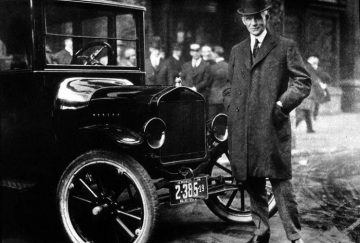 The utopian ideal of globalization has imploded over the past decade. Rising demand in Western countries for greater state control over the economy reflects a range of grievances, from a chronic shortage of well-compensated work to a sense of national decline. In the United States, the dearth of domestic supply chains exposed by the COVID-19 pandemic has only heightened alarm over the acute infrastructural weaknesses decades of outsourced production have created. Post-industrial society, rather than an advanced stage of shared affluence, is not only more unequal but fundamentally insecure. Rich but increasingly oligarchic countries are experiencing what we might call, following scholars of democratization, a dramatic “de-consolidation” of development.
The utopian ideal of globalization has imploded over the past decade. Rising demand in Western countries for greater state control over the economy reflects a range of grievances, from a chronic shortage of well-compensated work to a sense of national decline. In the United States, the dearth of domestic supply chains exposed by the COVID-19 pandemic has only heightened alarm over the acute infrastructural weaknesses decades of outsourced production have created. Post-industrial society, rather than an advanced stage of shared affluence, is not only more unequal but fundamentally insecure. Rich but increasingly oligarchic countries are experiencing what we might call, following scholars of democratization, a dramatic “de-consolidation” of development.
To reverse this decline, political forces on both the left and the right are converging on the imperative to use industrial policy—the strategic process by which governments, either through state support of industrialists or state-owned enterprises, build up and diversify domestic manufacturing.
More here.
Friday Poem
Another Life
Women spend the afternoon squatting on the porch,
picking lice from each other’s hair.
They spend the evening feeding the little ones,
lulling them to sleep in the glow of the bottle lamp.
The rest of the night they offer their back to be slapped
and kicked by the men of the house
or sprawl half-naked on the hard wooden cot.
Crows and women greet the dawn together,
the women blowing into the oven to start the fire,
tapping on the back of the winnowing tray with five fingers
and, with two, picking out the stones.
Half their lives women pick stones from the rice.
All their lives stones pile up in their hearts,
no one there to touch them even with two fingers.
by Taslima Nasrin
from The Poetry Nook
What Was California?
Justin E. H. Smith in his Substack Newsletter:
 In 1879 Josiah Royce wrote a letter from Berkeley, to William James at Harvard, describing the intellectual condition of his home state: “There is no philosophy in California. From Siskiyou to Ft. Yuma, and from the Golden Gate to the summit of the Sierras there could not be found brains enough to accomplish the formation of a single respectable idea that was not manifest plagiarism.” From any other author, these words could only be received as complaint, but Royce himself understands them as a neutral description of fact, perhaps even as subtle praise for a land he deems ill-disposed to the convection of metaphysical hot air.
In 1879 Josiah Royce wrote a letter from Berkeley, to William James at Harvard, describing the intellectual condition of his home state: “There is no philosophy in California. From Siskiyou to Ft. Yuma, and from the Golden Gate to the summit of the Sierras there could not be found brains enough to accomplish the formation of a single respectable idea that was not manifest plagiarism.” From any other author, these words could only be received as complaint, but Royce himself understands them as a neutral description of fact, perhaps even as subtle praise for a land he deems ill-disposed to the convection of metaphysical hot air.
Faced with such a dilemma, between philosophy and California, Royce chose California. He stuck around the newly founded department of philosophy at Berkeley, but the longer he stayed away from Harvard, the more his own thoughts turned to the singular facts and contingent truths —generally held to be beneath the radar of philosophy, a discipline of the mind dedicated to general principles and necessary truths— of California history.
In 1886 he published a peculiar book entitled California: A Study of American Character. From the Conquest in 1846 to the Second Vigilance Committee in San Francisco. There would be a great deal to say about the title alone. How many people today know, for example, that early San Francisco’s lawless “Barbary Coast”, long dominated by Australian gangs, could only be pacified by popular militias?
More here.
Room-Temperature Superconductivity Achieved, but the superconductor requires crushing pressures to keep from falling apart
Charlie Wood in Quanta:
 Yet while researchers celebrate the achievement, they stress that the newfound compound — created by a team led by Ranga Dias of the University of Rochester — will never find its way into lossless power lines, frictionless high-speed trains, or any of the revolutionary technologies that could become ubiquitous if the fragile quantum effect underlying superconductivity could be maintained in truly ambient conditions. That’s because the substance superconducts at room temperature only while being crushed between a pair of diamonds to pressures roughly 75% as extreme as those found in the Earth’s core.
Yet while researchers celebrate the achievement, they stress that the newfound compound — created by a team led by Ranga Dias of the University of Rochester — will never find its way into lossless power lines, frictionless high-speed trains, or any of the revolutionary technologies that could become ubiquitous if the fragile quantum effect underlying superconductivity could be maintained in truly ambient conditions. That’s because the substance superconducts at room temperature only while being crushed between a pair of diamonds to pressures roughly 75% as extreme as those found in the Earth’s core.
“People have talked about room-temperature superconductivity forever,” Pickard said. “They may not have quite appreciated that when we did it, we were going to do it at such high pressures.”
Materials scientists now face the challenge of discovering a superconductor that operates not only at normal temperatures but under everyday pressures, too. Certain features of the new compound raise hopes that the right blend of atoms could someday be found.
More here.
‘The Sea’: Read the story that won the 2020 Jawad Memorial Prize for Urdu-to-English translation
From Scroll.in:
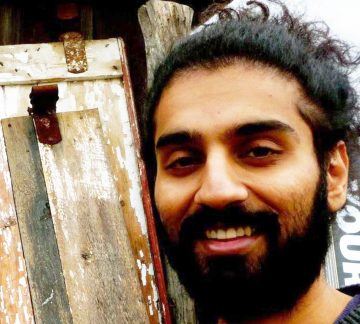
The unanimous choice for the 2020 winner of the Jawad Memorial Prize for Urdu-English Translation is “The Sea” by Khalida Hussain, translated by Haider Shahbaz.
Haider Shahbaz’s translation of Khalida Hussain’s “Samundar” was chosen primarily for the quality of translation and secondarily on account of what the story has to offer in its English rendering. The selection of the Urdu text, the urgency of its translation, its flow – all were praiseworthy.
“The Sea” succeeds in capturing the poignancy of the original text, communicating it to the reader so that she can feel the wind in her face, smell the fresh sea breeze, touch the gritty sand beneath her feet, and share in the pain of displacement that underpins Hussain’s short story. This is a difficult task for any writer, and especially for one who works between languages as disparate as English and Urdu in their tonal register and literary sensibility.
Both judges have added a note encouraging the winner to work towards a collection of Khalida Hussain’s stories in English translation.
More here, including the English translation of the story.
The World After Coronavirus: Adil Najam interviews Ban Ki-moon about The Future of the United Nations
The Making of Malcolm X
Kerri Greenidge in The Atlantic:
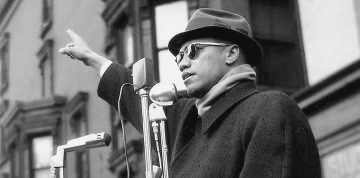 To anyone walking through Roxbury, Massachusetts, the sounds that waft over Dale Street are far away—the fart of buses on Washington Street to the west and on Warren Street to the east. The sidewalk that abuts the bowfront brick rowhouses and wood-frame two-families with porch railings and multiple mailboxes feels comfortably quiet. And it is possible to forget that the recently renamed Nubian Square—Roxbury’s central business district—is less than a 10-minute walk away. In the early 1940s, when Boston’s El towered over what was then called Dudley Square, Ella Mae Little-Collins purchased a two-and-a-half-story house at 72 Dale Street, not far from Washington Park, and invited her 15-year-old half brother, Malcolm, to move in with her. Over the next five years, until he was arrested in January 1946 on charges of larceny, breaking and entering, and illegal possession of a firearm, Malcolm Little lived off and on at No. 72, walking the streets of Roxbury and the South End in his wide-brimmed hats and zoot suits.
To anyone walking through Roxbury, Massachusetts, the sounds that waft over Dale Street are far away—the fart of buses on Washington Street to the west and on Warren Street to the east. The sidewalk that abuts the bowfront brick rowhouses and wood-frame two-families with porch railings and multiple mailboxes feels comfortably quiet. And it is possible to forget that the recently renamed Nubian Square—Roxbury’s central business district—is less than a 10-minute walk away. In the early 1940s, when Boston’s El towered over what was then called Dudley Square, Ella Mae Little-Collins purchased a two-and-a-half-story house at 72 Dale Street, not far from Washington Park, and invited her 15-year-old half brother, Malcolm, to move in with her. Over the next five years, until he was arrested in January 1946 on charges of larceny, breaking and entering, and illegal possession of a firearm, Malcolm Little lived off and on at No. 72, walking the streets of Roxbury and the South End in his wide-brimmed hats and zoot suits.
When he described 1940s Black Boston to Alex Haley as they worked together on The Autobiography of Malcolm X, two decades of distance had left him with barely concealed disdain for the Dale Street neighborhood. The cocky teenager had once marveled at the number of Black people in Dudley Square and the upper South End. But the man known variously as “East Lansing Red,” Prisoner 22843, Malcolm X, and Malik el-Shabazz told Haley that the enclave where he and Ella once lived was a bastion of middle-class Black pretension and snobbery. Yet despite this disavowal, Black Boston had a profound effect on the figure whom the artist-activist Shirley Graham Du Bois later referred to as “the most promising and effective leader of American Negroes in this century.”
More here.
